Abstract
The results are described of a meta-analysis of seven randomized trials that compared the clinical effects of the standard solution of WHO oral rehydration salts (ORS), containing 20 milligrams of glucose, and experimental ORS solutions, containing glycine, on 643 children with acute noncholera diarrhoea. The availability of data on individual patients in each trial permitted the scope of the meta-analysis to be enhanced because the data could be pooled after adjusting for differences in baseline patient characteristics; also, the statistical strategy in terms of data quality, post-randomization exclusion of patients, and regression modelling could be standardized for all trials. The results of the analysis showed that neither stool output nor duration of diarrhoea was reduced by the experimental formulations. Only for weight gain was there a statistically significant difference between the treatment groups (those given the WHO-ORS solution gained less weight). This probably reflects transient excess fluid retention within the gut lumen or tissues of the patients who received the glycine-containing solutions. ORS formulations that contain glycine are therefore not clinically superior to the WHO-ORS solution.
Full text
PDF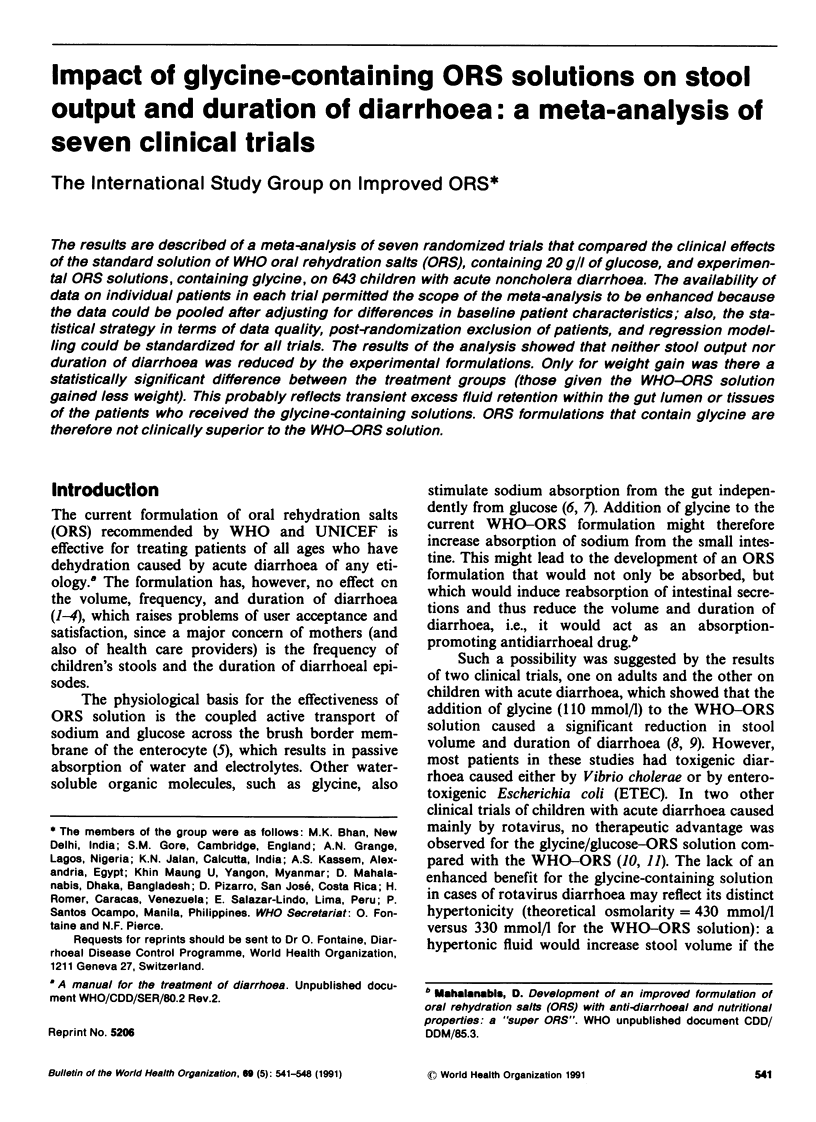
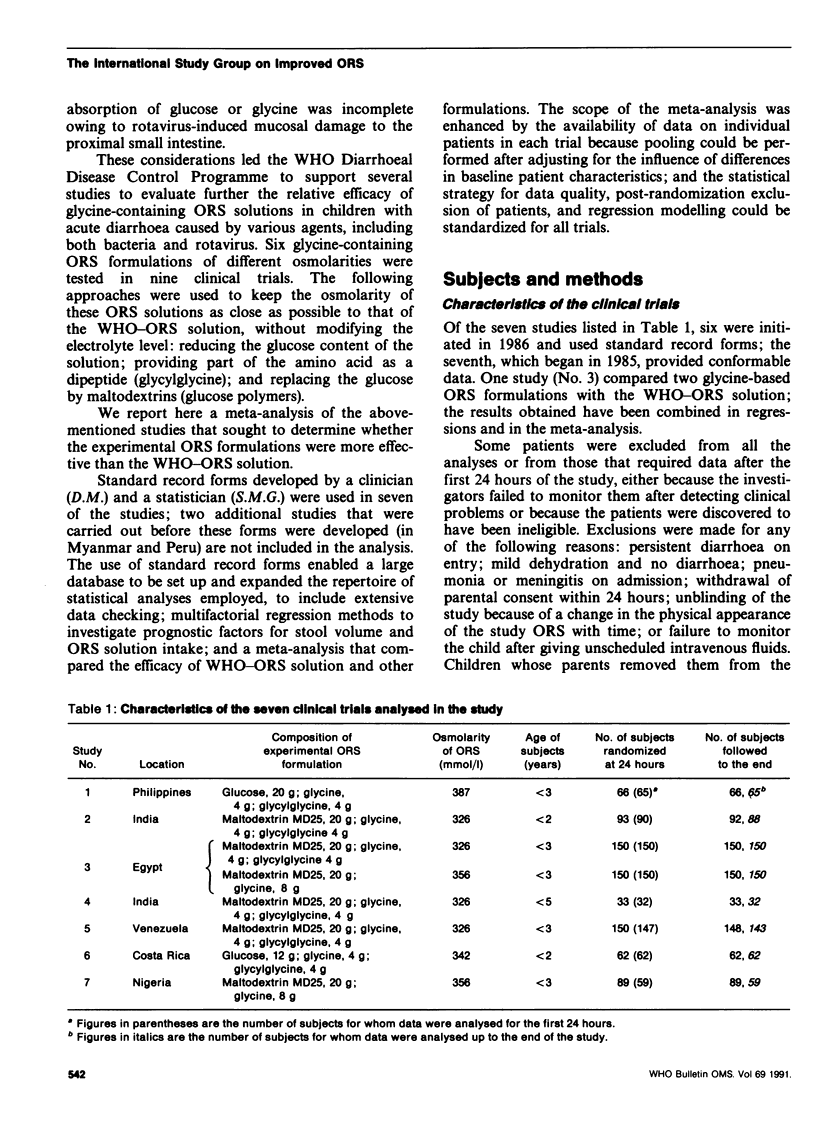
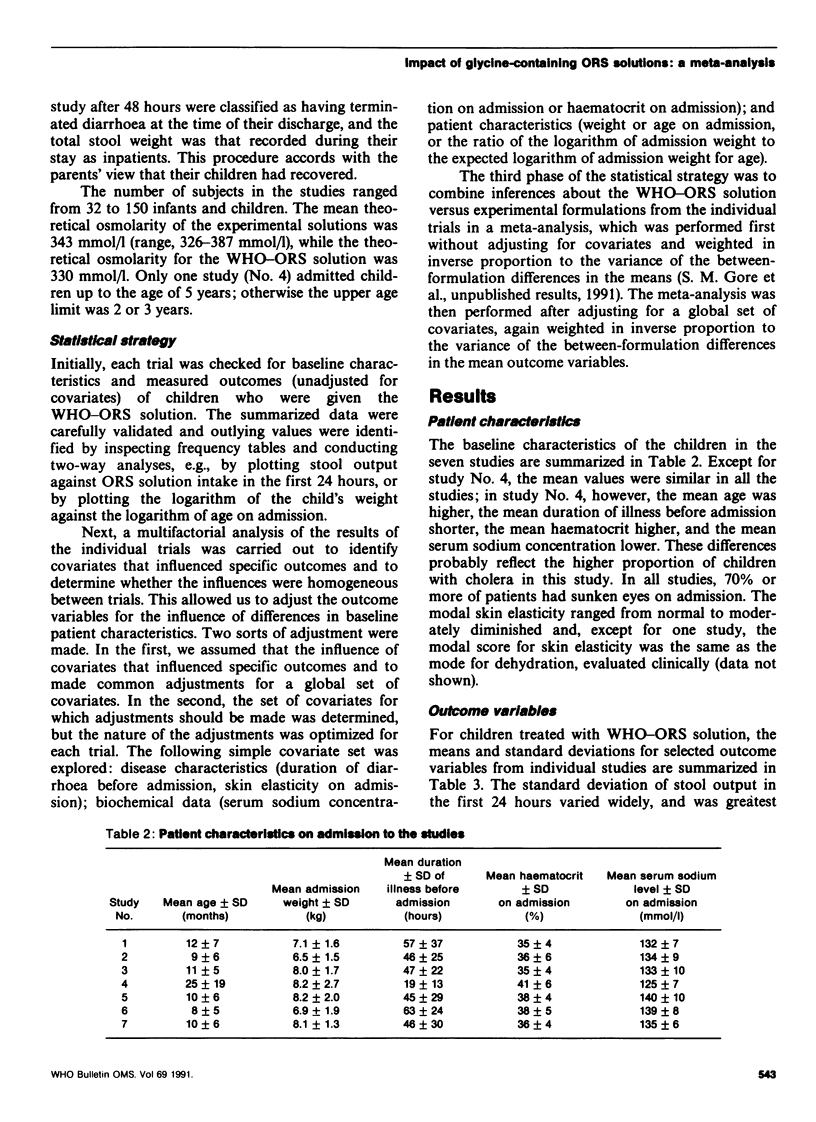
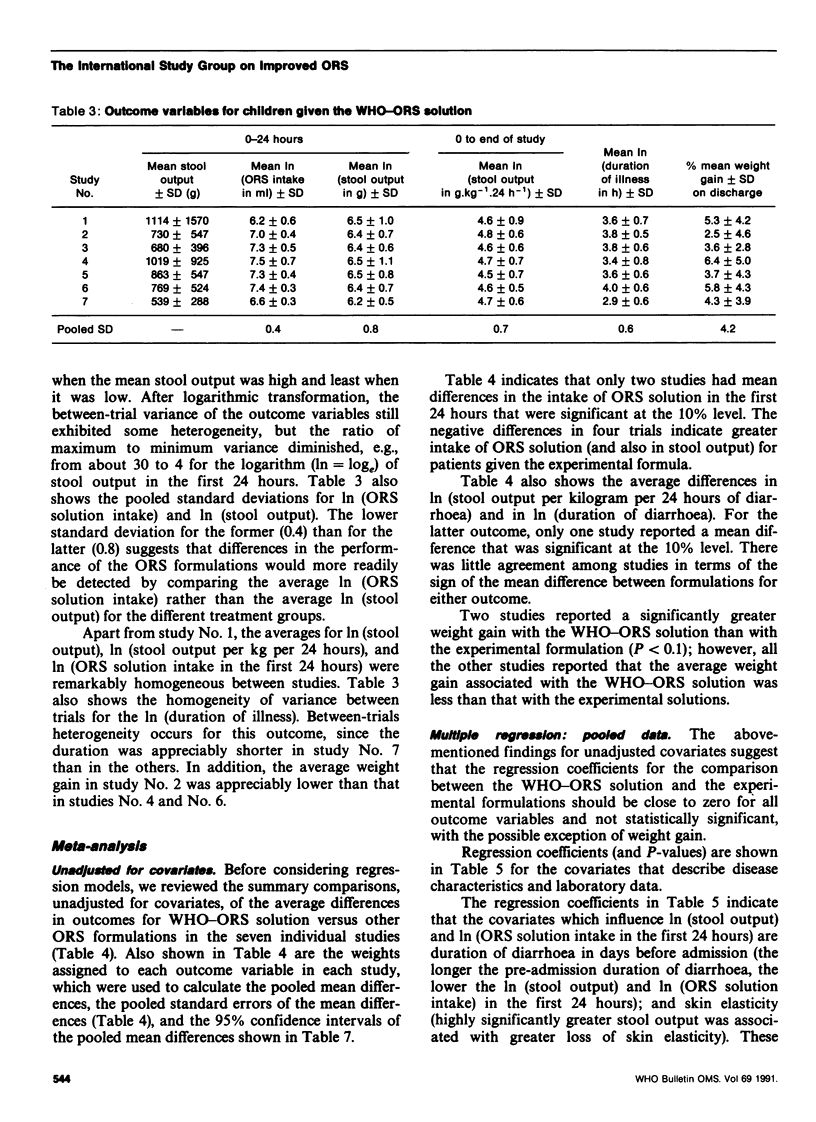
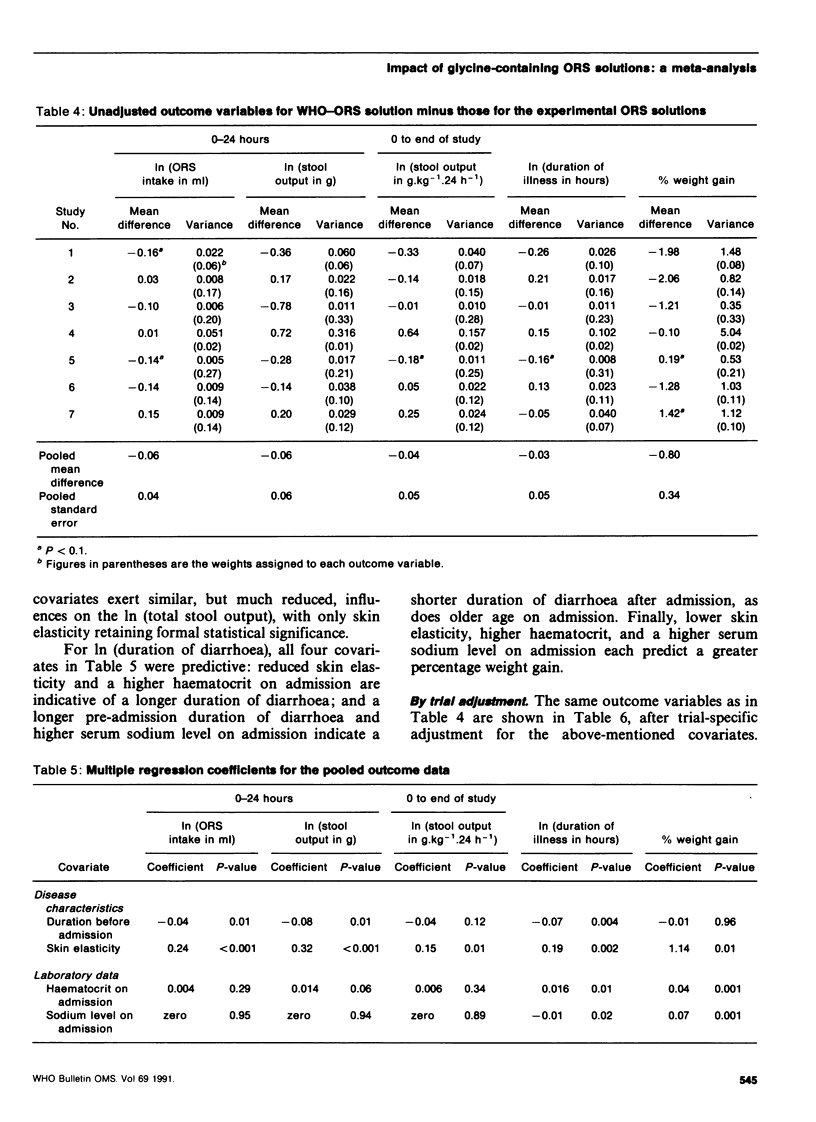
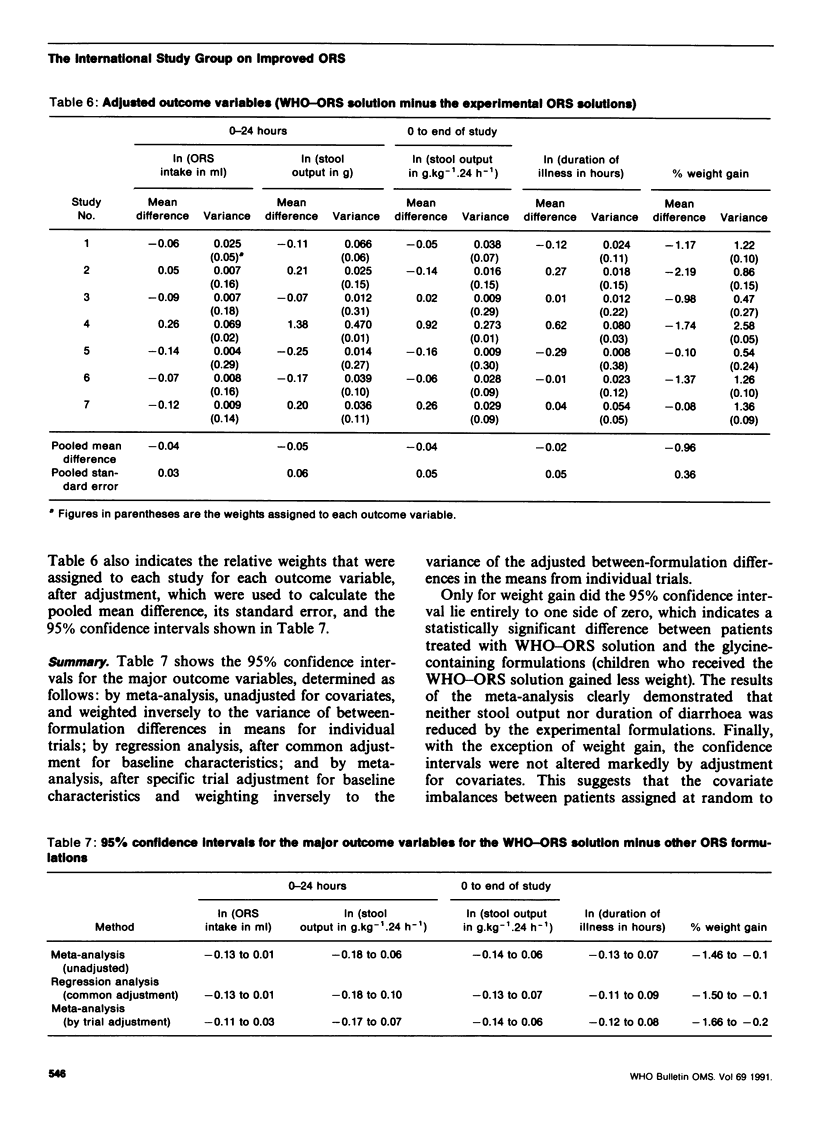
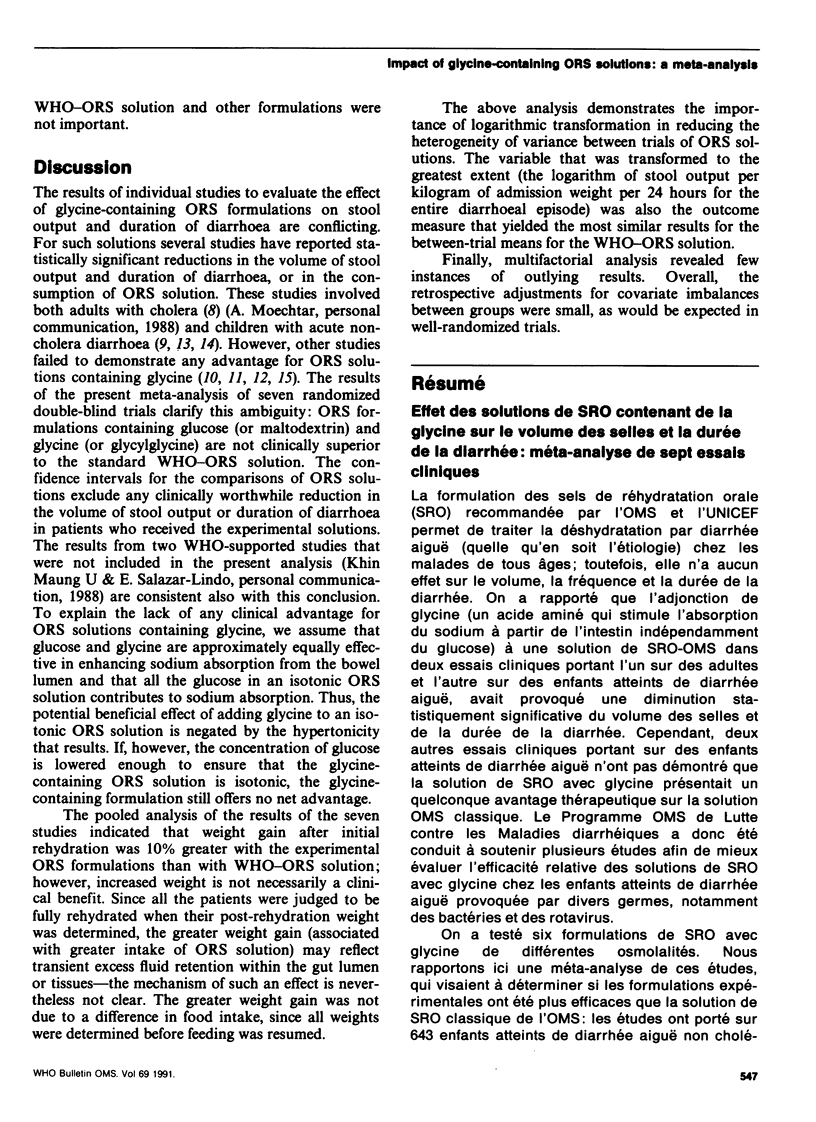
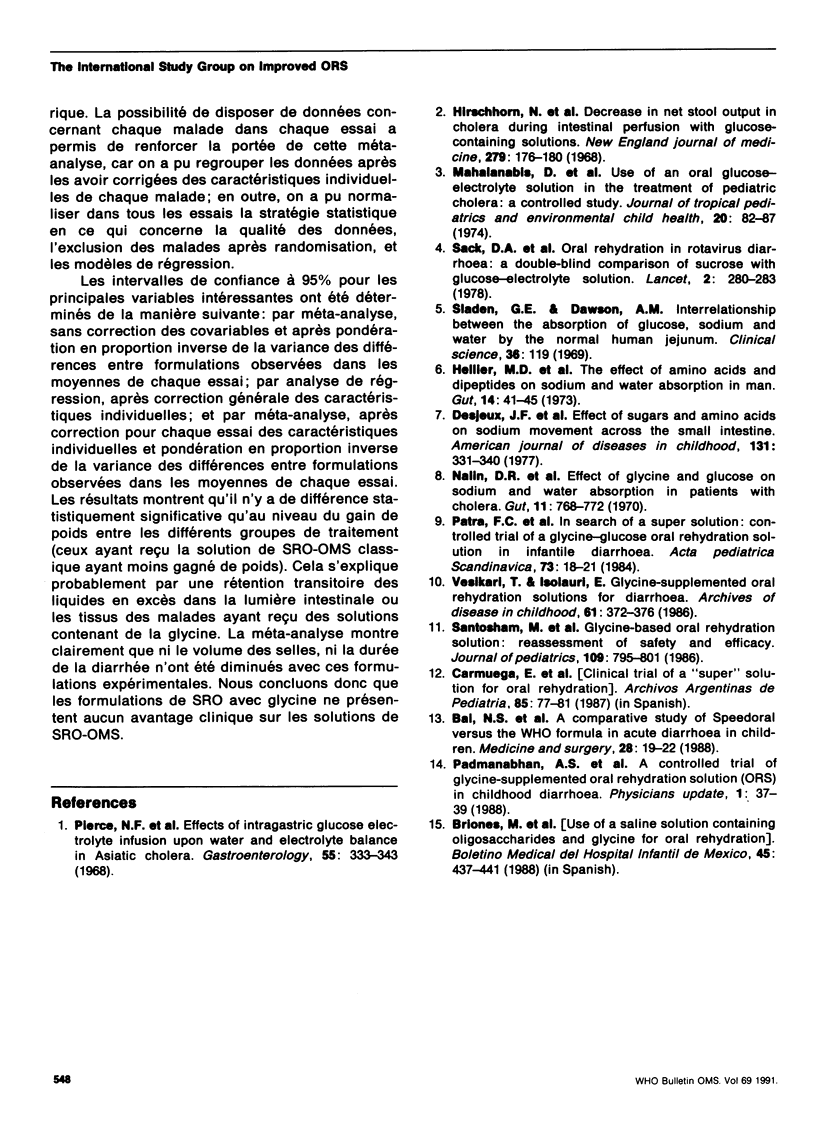
Selected References
These references are in PubMed. This may not be the complete list of references from this article.
- Hellier M. D., Thirumalai C., Holdsworth C. D. The effect of amino acids and dipeptides on sodium and water absorption in man. Gut. 1973 Jan;14(1):41–45. doi: 10.1136/gut.14.1.41. [DOI] [PMC free article] [PubMed] [Google Scholar]
- Nalin D. R., Cash R. A., Rahman M., Yunus M. Effect of glycine and glucose on sodium and water adsorption in patients with cholera. Gut. 1970 Sep;11(9):768–772. doi: 10.1136/gut.11.9.768. [DOI] [PMC free article] [PubMed] [Google Scholar]
- Patra F. C., Mahalanabis D., Jalan K. N., Sen A., Banerjee P. In search of a super solution: controlled trial of glycine-glucose oral rehydration solution in infantile diarrhoea. Acta Paediatr Scand. 1984 Jan;73(1):18–21. doi: 10.1111/j.1651-2227.1984.tb09891.x. [DOI] [PubMed] [Google Scholar]
- Pierce N. F., Banwell J. G., Rupak D. M., Mitra R. C., Caranasos G. J., Keimowitz R. I., Mondal A., Manji P. M. Effect of intragastric glucose-electrolyte infusion upon water and electrolyte balance in Asiatic cholera. Gastroenterology. 1968 Sep;55(3):333–343. [PubMed] [Google Scholar]
- Sack D. A., Chowdhury A. M., Eusof A., Ali M. A., Merson M. H., Islam S., Black R. E., Brown K. H. Oral hydration rotavirus diarrhoea: a double blind comparison of sucrose with glucose electrolyte solution. Lancet. 1978 Aug 5;2(8084):280–283. doi: 10.1016/s0140-6736(78)91687-2. [DOI] [PubMed] [Google Scholar]
- Sladen G. E., Dawson A. M. Interrelationships between the absorptions of glucose, sodium and water by the normal human jejunum. Clin Sci. 1969 Feb;36(1):119–132. [PubMed] [Google Scholar]


